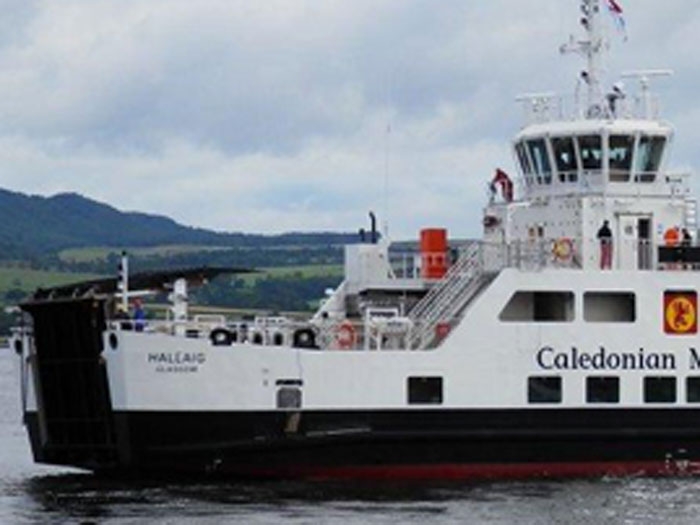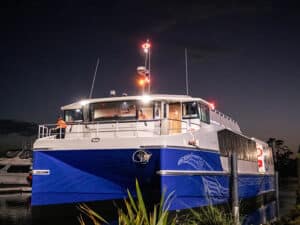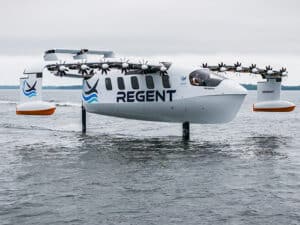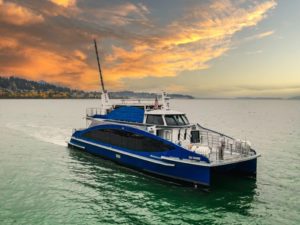
Hybrid ferry achieves 38% fuel savings
Written by Nick Blenkey
APRIL 7, 2014 — Rotterdam headquartered Imtech Marine says that a hybrid propulsion system supplied for the first diesel electric, hybrid ferries built for Scottish state-owned ferry operator, Caledonian Maritime Assets Ltd (CMAL) are producing even better fuel savings than the 20% originally expected in 2011.
Following extensive trials, Imtech Marine reports that the actual fuel savings with the innovative hybrid system – consisting of diesel electric in combination with battery technology – are up to 38%.
CMAL operates 30 ferries on the west coast of Scotland to 18 islands. Imtech Marine has now provided two CMAL ferries with the hybrid system.
Jim Anderson of CMAL says: “In our initial estimates we had planned to save at least 20% on fuel, when we received the reports that the actual fuel savings were almost twice that number we were pleasantly surprised. With this achievement the CO2 emissions have been effectively reduced so we also made a major step towards the reduction of the carbon footprint.”
Imtech Marine carried out two weeks of optimising trials on the MV Hallaig, which operates between the Isle of Skye and Raasay, an island inhabited by around 150 people. It was hoped that the tests could prove the value of hybrid technology and provide the foundation for future developments.
Alexander Breijs, Imtech Marine Consultant Energy Systems, who was one of those on board carrying out the tests, comments: “On closer examination of these fuel savings, some 28% came from shore charging the batteries overnight, making the system more efficient, and the remaining 10% is the result of the fact that Imtech Marine is using the battery energy in a ‘smart’ way via our new Energy Management System (EMS).”
Eventually, the batteries will be charged using the island’s own wind energy, making the system even more environmentally friendly.
Imtech experts started on board by measuring the efficiencies of individual components under various conditions such as the fuel consumption of the diesel generators, efficiencies of the drive and propulsion motor. Then the team sailed for several days in diesel electric mode without the batteries; recording fuel and kilowatt-hour consumption. This was the “baseline”measurement to which they would later compare all other results. Then the ferry sailed with its batteries in hybrid mode for the remainder of the two week test period.
Imtech Marine sees a considerable increase in interest in hybrid options from the shipping industry. Hybrid technology in combination with energy management systems makes it possible to meet the European goal to reduce the carbon footprint by 40% in 2020 to 1990 level. Another advantage is noise and fuel reduction.
Delivered by Ferguson Shipbuilders, Port Glasgow, Scotland, in 2012 the 43.5 m x 12.m Hallaig entered service in 2013 and has a capacity of 150 passengers, 23 cars and two trucks.
It is powered by three Volvo Penta Marine D13 MG (diesel electric hybrid) engines and lithium ion batteries with two 375 kW permanent magnet motors coupled to two Voith 16 R5 EC/90-1 propulsion units.





Leave a Reply
You must be logged in to post a comment.